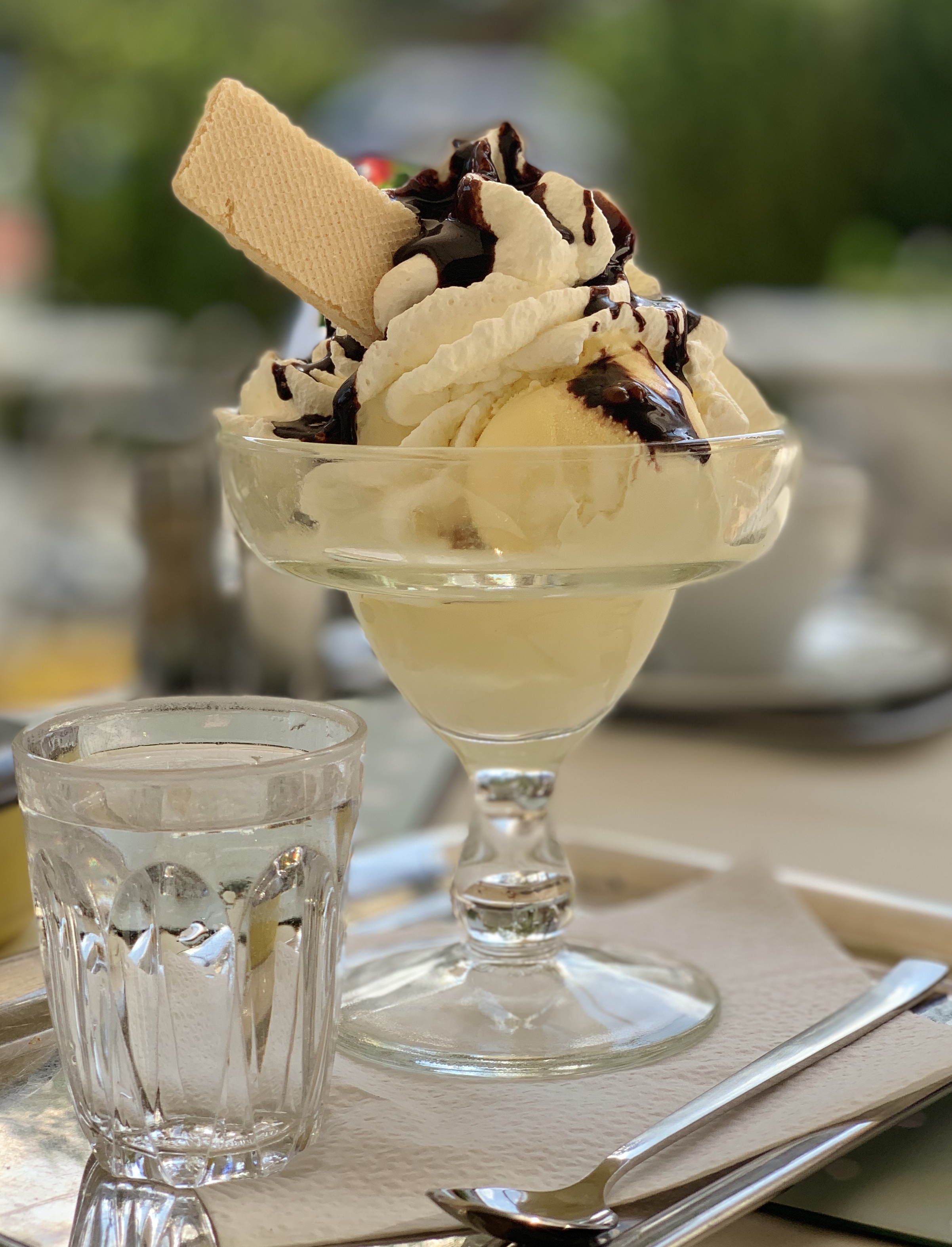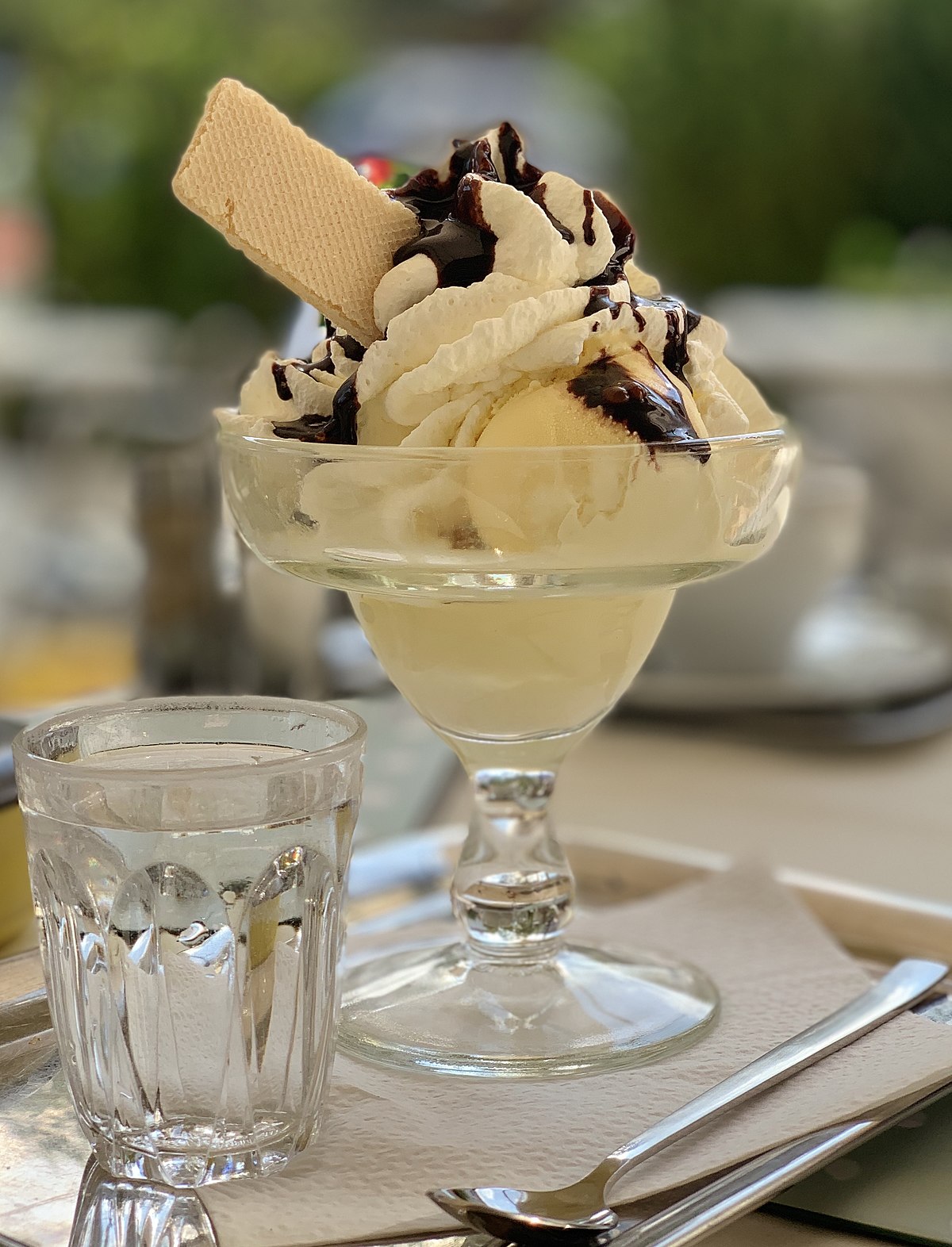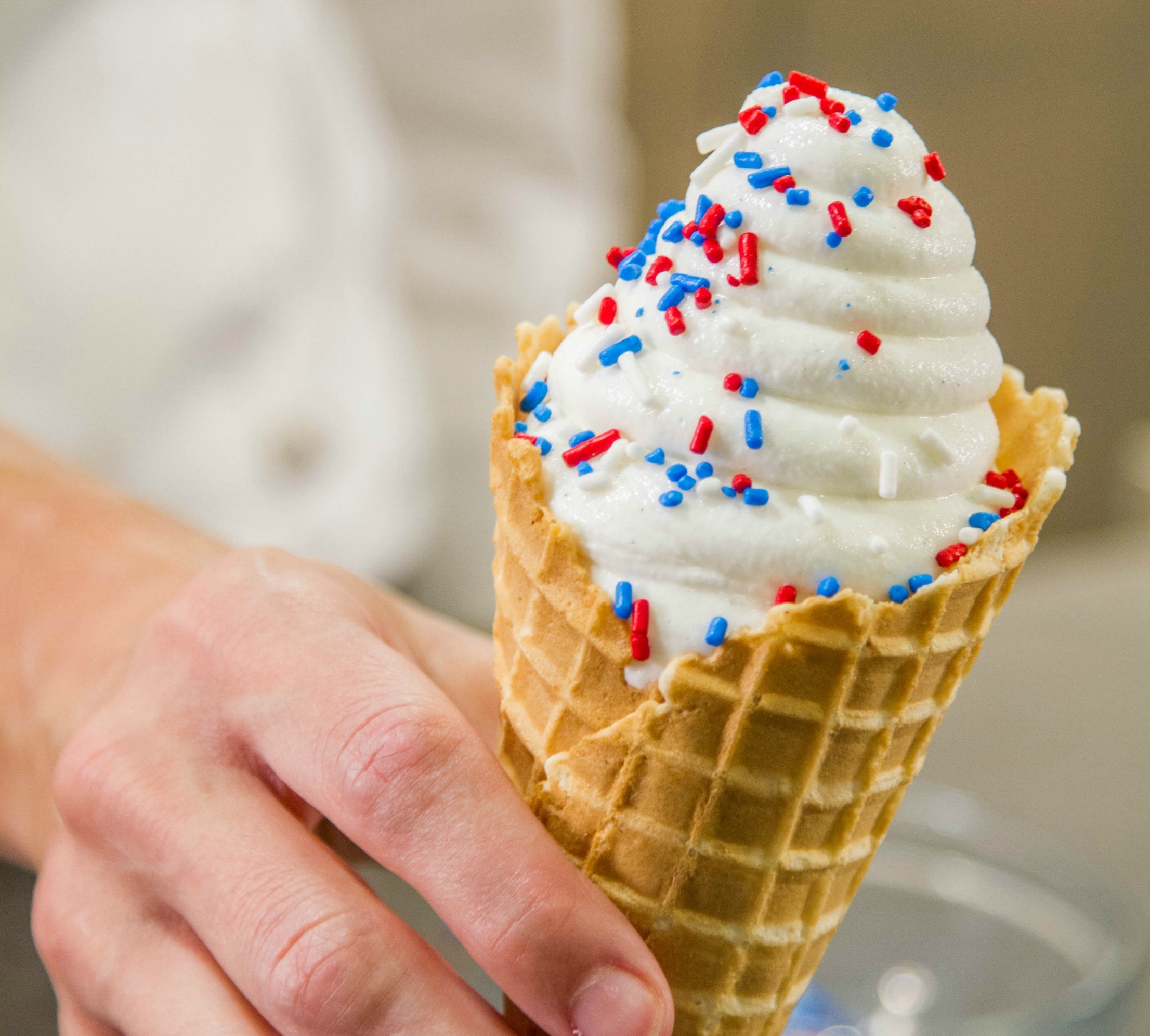Introduction

Ice cream is a beloved frozen treat enjoyed by people of all ages. Its creamy texture and variety of flavors make it a popular choice for dessert. But have you ever wondered about the physical properties of ice cream? Is it a solid or a liquid? The answer is actually quite fascinating. Ice cream exists simultaneously as a solid (the ice crystals), a liquid (the milk and sugar solution), and a gas (the air bubbles), making it a unique and complex substance. In this article, we will delve into the composition and structure of ice cream and explore its solid and liquid-like properties.
The Fascinating World Of Ice Cream
The world of ice cream is a fascinating one, filled with a wide range of flavors and textures that delight our taste buds. From classic vanilla and chocolate to exotic combinations like strawberry cheesecake and green tea, there is something for everyone to enjoy. The process of making ice cream involves a delicate balance of ingredients and techniques, resulting in a creamy and smooth treat that melts in your mouth. Whether you prefer it in a cone or a bowl, ice cream remains a beloved dessert that brings joy and satisfaction to people of all ages. So next time you indulge in a scoop of your favorite flavor, take a moment to appreciate the fascinating world of ice cream and all it has to offer.
Composition And Structure Of Ice Cream
Ice cream is composed of a unique combination of ingredients that contribute to its smooth and creamy texture. It consists of ice crystals, air bubbles, fat droplets, and a viscous sugar solution. The ice crystals, which make up about 30% of the volume, provide the icy sensation when consumed. Air bubbles, comprising 50% of the volume, contribute to the light and fluffy texture. The fat droplets from the cream give richness and creaminess to the ice cream. Lastly, the viscous sugar solution holds everything together and adds sweetness. These components work together to create the delightful structure and composition of ice cream. [3]
Is Ice Cream A Solid?

Ice cream is not considered a pure solid, but rather a semisolid. While it contains solid components such as ice crystals, it also has liquid-like properties. The ice crystals provide the structure and texture of the dessert. However, due to the presence of air bubbles and the viscous sugar solution, ice cream also flows and can be easily scooped like a liquid. This unique combination of solid and liquid characteristics is what makes ice cream so enjoyable and versatile. So, next time you indulge in a cone, remember that ice cream is a delightful blend of both solid and liquid properties. [5]
Physical Characteristics Of Solids
Solids are characterized by their definite shape and volume. They have a strong intermolecular forces of attraction, which keeps their particles tightly packed and organized in a regular pattern. This leads to the rigidity and stability of solids. They are not easily compressed or deformed, and they maintain their shape unless acted upon by an external force. Solids also exhibit a high density due to the close arrangement of particles. These physical characteristics contribute to the solid-like properties of ice cream, such as its ability to hold its shape and provide a creamy texture. [7]
Solid-like Properties Of Ice Cream
Ice cream exhibits solid-like properties due to its high viscosity, rigidity, and ability to maintain its shape. The presence of fat globules and ice crystals gives it a creamy texture and allows it to hold its shape. It is not easily compressed or deformed, and it maintains its structure unless acted upon by an external force. These solid-like characteristics contribute to the enjoyment of ice cream, as it can be scooped, held on a cone, or molded into different shapes. The stability and rigidity of ice cream allow it to be stored without losing its form.
Is Ice Cream A Liquid?

Although ice cream exhibits solid-like properties, it is important to remember that it is not a liquid. While it contains liquid components such as water and milk, the presence of fat globules and ice crystals gives ice cream a semi-solid texture. The high viscosity and rigidity of ice cream allow it to maintain its shape and structure. It is not easily pourable like a liquid and requires a spoon or a cone to be consumed. Therefore, while it contains some liquid components, ice cream can be classified as a soft, semi-solid dessert rather than a liquid.
Physical Characteristics Of Liquids
Liquids possess certain physical characteristics that distinguish them from solids. Unlike solids, liquids have a definite volume but do not have a definite shape. They can flow and take the shape of any container they are placed in. Liquids also exhibit surface tension, which is the force that allows them to form droplets and create a curved surface. Furthermore, liquids have the ability to evaporate, changing from a liquid to a gaseous state at temperatures below their boiling point. These characteristics contribute to the liquid-like properties of ice cream. [14]
Liquid-like Properties Of Ice Cream
Ice cream exhibits several liquid-like properties. One of these properties is its ability to flow and take the shape of its container. When scooped or poured, ice cream easily molds to its surroundings, similar to how a liquid would. Additionally, ice cream has a characteristic known as surface tension, which allows it to form droplets and create a curved surface. This surface tension also contributes to its smooth and creamy texture. Furthermore, ice cream can undergo evaporation, transitioning from a liquid to a gaseous state at temperatures below its boiling point. This evaporation process can lead to ice cream becoming icy or developing freezer burn if not stored properly. Understanding these liquid-like properties is essential for enjoying and properly storing ice cream. [15][16].
The Role Of Temperature

The role of temperature plays a crucial role in the properties of ice cream. Temperature affects the consistency, texture, and overall quality of ice cream. When ice cream is exposed to high temperatures, it melts and loses its solid-like characteristics. On the other hand, when ice cream is stored at very low temperatures, it becomes hard and difficult to scoop. Temperature also influences the formation of ice crystals, which can affect the smoothness and creaminess of the ice cream. Therefore, maintaining the right temperature is essential for enjoying the desired consistency and texture of ice cream.
Effects Of Temperature On Ice Cream
The role of temperature plays a crucial role in the properties of ice cream. Temperature affects the consistency, texture, and overall quality of ice cream. When ice cream is exposed to high temperatures, it melts and loses its solid-like characteristics. On the other hand, when ice cream is stored at very low temperatures, it becomes hard and difficult to scoop. Temperature also influences the formation of ice crystals, which can affect the smoothness and creaminess of the ice cream. Therefore, maintaining the right temperature is essential for enjoying the desired consistency and texture of ice cream. [19] [20]
Solid To Liquid Transition
The solid to liquid transition is a significant phenomenon that occurs in ice cream when subjected to temperature changes. As the temperature rises, the solid ice cream starts to melt and transition into a liquid state. During this transition, the ice crystals begin to break down, transforming the icy structure into a smoother, more liquid-like consistency. This transition is crucial for the enjoyment of ice cream, as it allows for easier scooping and a creamier texture. However, it’s important to maintain the right temperature to prevent the ice cream from completely melting and becoming too runny.
Semicrystalline Nature Of Ice Cream

Ice cream exhibits a semicrystalline nature, meaning it contains both crystalline and non-crystalline regions. The ice crystals formed during the freezing process are responsible for the crystalline structure. These ice crystals are randomly dispersed throughout the ice cream mixture. The non-crystalline regions, on the other hand, consist of sugar and fat molecules that do not form regular crystal patterns. This combination of crystalline and non-crystalline regions gives ice cream its unique texture and mouthfeel. The presence of both types of structures contributes to the smoothness and creaminess of the frozen dessert.
Crystallization In Ice Cream
Crystallization is a key process that occurs in ice cream formation. During the freezing process, water molecules in the ice cream mixture align and form ice crystals. These ice crystals can vary in size, affecting the texture and consistency of the ice cream. The rate at which the ice cream is frozen and the presence of ingredients such as sugar and stabilizers can influence the formation of these ice crystals. Crystallization plays a crucial role in the overall structure and mouthfeel of ice cream, contributing to its smooth and creamy texture.
Influence On Texture And Consistency
One of the main factors that influence the texture and consistency of ice cream is the formation of ice crystals. The size and distribution of these crystals can greatly affect the overall mouthfeel of the ice cream. When the ice cream mixture is frozen quickly, smaller ice crystals are formed, resulting in a smoother and creamier texture. On the other hand, if the freezing process is slow or interrupted, larger ice crystals may form, giving the ice cream a grainy or icy texture. Additionally, the presence of stabilizers and emulsifiers in the ice cream mixture can help prevent the formation of large ice crystals, resulting in a smoother and more consistent product. Overall, the crystallization process is crucial in determining the texture and consistency of ice cream.
Conclusion

In conclusion, ice cream exhibits both solid-like and liquid-like properties, making it a unique and versatile dessert. Its semicrystalline nature allows for a range of textures and consistencies, influenced by factors such as temperature and the formation of ice crystals. Understanding the dual nature of ice cream can enhance its enjoyment and inform proper storage techniques. Whether solid or liquid, ice cream remains a beloved treat that continues to captivate our taste buds. So next time you indulge in a scoop, savor the science behind this delightful frozen concoction. [29] [30]
Understanding The Dual Nature Of Ice Cream
Ice cream is truly a fascinating dessert with its dual nature. Its ability to exhibit both solid-like and liquid-like properties makes it a unique treat. Ice cream’s solid component is represented by the ice crystals, while its liquid component consists of the milk and sugar solution. The air bubbles incorporated during the freezing process further contribute to its creamy, light texture. Understanding this dual nature allows us to appreciate the complexity and versatility of ice cream. Whether it’s the satisfying bite of a solid or the smooth melt in your mouth, ice cream continues to captivate our taste buds.
Implications For Enjoyment And Storage
Ice cream’s dual nature of being both solid and liquid has important implications for both its enjoyment and storage. When it comes to enjoying ice cream, its solid-like properties contribute to the satisfying bite and texture, while its liquid-like properties allow it to melt smoothly in your mouth. The temperature at which it is consumed also plays a role in the experience, as colder temperatures maintain its solid state longer.
In terms of storage, it is important to keep ice cream in a freezer at a consistent low temperature to prevent it from becoming too liquid, which can affect its texture and taste. Additionally, tightly sealing the container is crucial to prevent the formation of ice crystals and maintain its quality. Understanding these implications can help ensure that your ice cream remains as delicious and enjoyable as possible.
Frequently Asked Questions about Ice Cream: Is it Solid or Liquid?
Q: Is ice cream considered a solid or a liquid?
A: Ice cream is technically a colloid, which means it is neither purely solid nor purely liquid. It exhibits characteristics of both, appearing solid but having certain liquid properties.
Q: Why does ice cream appear solid then?
A: Ice cream is solid due to the high concentration of fat, proteins, sugars, and other ingredients that form a network of solid particles. This network helps it maintain its shape.
Q: What gives ice cream its creamy texture?
A: The creamy texture of ice cream is primarily achieved by incorporating air into the mixture during the churning process. The air bubbles dispersed throughout the mixture contribute to its light and smooth consistency.
Q: Does ice cream melt like a liquid?
A: Yes, ice cream does melt like a liquid. When exposed to higher temperatures, the fat content in ice cream starts to melt, causing it to change from a solid state to a semi-liquid consistency.
Q: What happens when ice cream melts?
A: As ice cream melts, the solid particles within the colloid separate, and the mixture becomes less viscous. This is why melted ice cream appears more like a liquid than a solid.
Q: Can I refreeze melted ice cream?
A: While it is safe to refreeze melted ice cream, it may affect the texture and taste. The ice crystals that form during the second freezing may change the smoothness of the original texture.
Q: Are certain flavors more prone to melting than others?
A: Yes, some ice cream flavors may melt faster than others due to their composition. For instance, flavors with higher water content, such as sorbets, tend to melt more quickly than those with a higher fat content, like chocolate or vanilla.
Q: Can ice cream be both solid and liquid at the same time?
A: Yes, when ice cream is partially melted, it can exist in a state where both solid and liquid phases coexist. This is why you may experience a combination of creamy and melted parts when eating a partially melted ice cream cone.
Q: What can affect the solidity of ice cream?
A: Factors such as temperature, the amount of air incorporated during churning, the type of stabilizer used, and the fat content can all impact the solidity of ice cream. Different recipes and manufacturing processes can yield varying levels of firmness.
Q: How can I achieve the perfect consistency for homemade ice cream?
A: To achieve the ideal consistency, it is crucial to follow a well-balanced recipe with the correct proportions of ingredients. Proper churning during the freezing process and using ingredients like stabilizers and emulsifiers can also help achieve the desired texture.
In conclusion, ice cream falls into the category of a colloid, displaying properties of both a solid and a liquid. Its solid-like structure, created by a network of solid particles, gives it stability, while its ability to melt into a semi-liquid state demonstrates its liquid qualities.

Soo Good Snack Bar is an upscale snack shop located at 1309 Hermosa Ave. in Hermosa Beach, CA. This family-owned business is the newest addition to the community of Hermosa, and our goal is to create a fun and inviting place where families can enjoy delicious snack foods that fit the beach lifestyle. Check us out today and help yourself to happiness.
